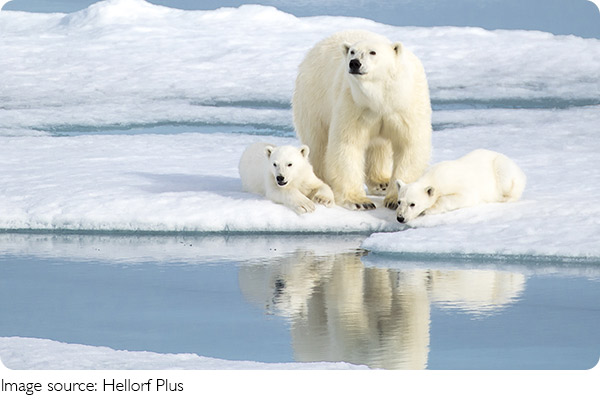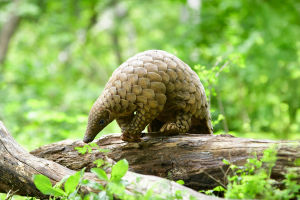Polar Bear Survival

When we imagine the frozen world of the Arctic, one animal stands out — the mighty polar bear. But have you ever wondered how these powerful creatures survive in such an unforgiving landscape?
Today, let's explore together the incredible ways polar bears stay warm and hunt successfully in their icy home.
The Ultimate Insulation System
First, let's look at how polar bears stay warm in the Arctic cold, where temperatures often drop below -40°C.
Polar bears have a three-layer system that provides excellent insulation:
• Thick fur: While their fur appears white, each hair is actually transparent and hollow. These hairs scatter and reflect light, giving the bear a white appearance that blends with the snow. The hollow structure helps trap warm air close to the body.
• Dense underfur: Beneath the outer layer, a dense layer of underfur offers additional warmth and wind protection.
• Thick skin and tissue layer: Underneath the fur, a substantial layer of body tissue, sometimes more than 10 cm thick, insulates the bear from the cold and stores energy.
Dr. Ian Stirling, a renowned polar bear expert, explains that this combination of adaptations makes polar bears “one of the best-insulated mammals on Earth.”

The Magic of Their Skin
An interesting fact: polar bears actually have black skin underneath their fur. Scientists believe this helps absorb and retain heat from the sun, even when it is weak during Arctic winters.
Though their skin plays a supporting role, it contributes to the bear's ability to maintain body temperature in extreme conditions.
Keeping Warm on Ice and Water
Unlike many Arctic animals, polar bears spend much of their time on sea ice and in the frigid Arctic Ocean. How do they manage this?
• Their large, wide paws help distribute their weight on thin ice and act like paddles in water.
• The thick tissue layer protects their core from the cold water during long swims — some lasting several hours.
• After swimming, they often shake off water and roll in snow to dry their fur and maintain insulation.
Dr. Andrew Derocher, a polar bear researcher at the University of Alberta, notes that polar bears are remarkably adapted to both ice and water — a key to their success as Arctic hunters.
Hunting in a Frozen World
Staying warm is only part of the story. Polar bears must also find food — and this is where their intelligence and patience shine.
Their primary prey is the ringed seal, which breathes through holes in the sea ice. Polar bears use several hunting techniques:
• Still-hunting: They locate seal breathing holes and wait silently, sometimes for hours, for a seal to surface.
• Stalking: They slowly creep toward seals resting on the ice, using snow drifts and wind direction to stay hidden.
• Breaking into dens: In some cases, they break into snow dens where seals give birth.
Polar bears rely heavily on sea ice for hunting. As Dr. Steven Amstrup, chief scientist for Polar Bears International, warns, shrinking sea ice due to climate change poses a major threat to their ability to find food.

Surviving Through Lean Seasons
During summer, when sea ice retreats, polar bears often fast for weeks or months, relying on stored energy.
Their thick tissue layer allows them to survive this period. Some bears may scavenge on land, but seals remain their most critical food source.
Dr. Peter K. Molnár's research shows that polar bears' ability to endure long fasting periods is vital to their survival — another example of their incredible adaptation.
Final Thoughts: True Arctic Survivors
So, how do polar bears survive the Arctic cold? Through a perfect combination of insulation, smart hunting techniques, and remarkable endurance.
Next time you see a picture of a polar bear walking across ice or swimming in icy waters, remember the incredible biological design that allows them to thrive in such a harsh environment.
Now it's your turn, Lykkers — which animal survival story fascinates you the most? Share it with us, and let's keep discovering the wonders of nature together!
-
 Secrets of SlownessWhy Are Sloths So Slow? Discover the Surprising Secrets That Make Their Laziness the Ultimate Survival Skill!
Secrets of SlownessWhy Are Sloths So Slow? Discover the Surprising Secrets That Make Their Laziness the Ultimate Survival Skill! -
 Pangolin Armor PowerHow Tough Is a Pangolin's Armor? This Natural Shield Might Shock You!
Pangolin Armor PowerHow Tough Is a Pangolin's Armor? This Natural Shield Might Shock You! -
 Joey's Amazing JourneyCan Baby Kangaroos Really Move Inside Mom’s Pouch? The Truth Will Surprise You!
Joey's Amazing JourneyCan Baby Kangaroos Really Move Inside Mom’s Pouch? The Truth Will Surprise You!